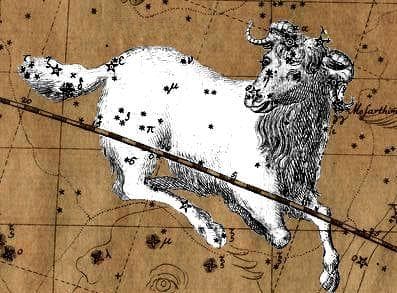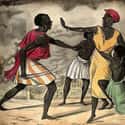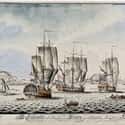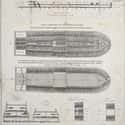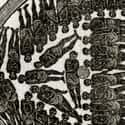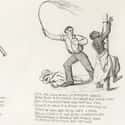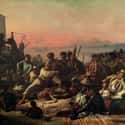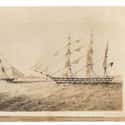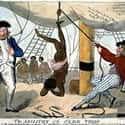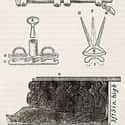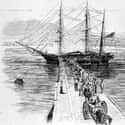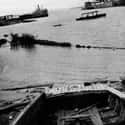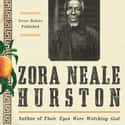-
(#1) Africans Were Seized In Raids Or Purchased From African Slave Traders
Slavery was part of African society long before the arrival of European slave traders, but the type of slavery practiced in the African tradition was very different. Captives were traded within the continent as a sign of wealth - they could be debtors, prisoners of war, or political prisoners - but slaves were not chattel. With the influx of Islamic merchants, slaves from Africa were transported to the Mediterranean, and later to the Americas, by European merchants.
When Europeans arrived in Africa, they first tried to raid the area themselves. This didn't prove a successful practice, so Europeans began buying enslaved people from African slave traders in places like the kingdom of the Kongo. Soon, African traders started raiding nearby areas to acquire more people to sell to Europeans.
-
(#2) Captives Were Chained Together And Marched To The Boats
Captives from throughout Africa were brought together in port cities to be transported across the Atlantic Ocean. As they moved around from place to place on their journey toward the coast, the enslaved Africans would be chained to one another in slave trains. The people came from different backgrounds, spoke different languages, may have never seen the ocean before, and almost certainly had never been on a ship like the ones they were about to board.
-
(#3) Captives Were Put Onto The Ships And Chained Below Deck
Once at the port city, slaves were marched onto ships and put below deck. Former slave Olaudah Equiano wrote about his experiences after being freed (he was active in the abolition movement in England in the 18th century) and described the confusion and shock he felt.
He wasn't sure if the white men were going to kill him or eat him. Once he was on board, he saw "a multitude of Black people of every description chained together, every one of their countenances expressing dejection and sorrow," and was so filled with fear that he fainted.
The chains used on the enslaved Africans would chafe and dig into their skin, making movement painful. With such a high death rate along the Middle Passage, many captives would find themselves fettered to corpses.
-
(#4) Ships Designed To Carry A Few Hundred People Transported As Many As 700
Slave ships were designed to carry hundreds of people, but were usually over-crowded in the interest of profit. The more slaves on a ship, the more money there was to be made. Captives were packed into the ship so tightly that they had no more than a few feet to move, sit, or sleep. Conditions were so cramped that those enslaved would not have been able to find a bucket to defecate or urinate in, thus forcing them to stay in their own waste.
The Brookes ship, later a key part of the argument against the slave trade, depicted how slaves were to be put below deck and carried on slave ships. Prior to the passage of the Regulation Act of 1788, the Brookes carried over 700 slaves. After the law was passed, regulations restricted the number of captives aboard to about 450.
-
(#5) Below Deck, The Odor From Feces, Urine, And Vomit Was Sickening
Olaudah Equiano described what met him when he went below deck:
I was soon put down under the decks, and there I received such a salutation in my nostrils as I had never experienced in my life: so that, with the loathsomeness of the stench and crying together, I became so sick and low that I was not able to eat. I now wished for the last friend, death, to relieve me.
Slaves were sometimes taken above deck and bathed, weather permitting, but the periodic washings were no match for the brutal conditions.
-
(#6) If Enslaved People Disobeyed Their Captors, They Were Flogged, Beaten, and Branded
The punishment for captives who didn't listen to the crew, tried to escape, didn't eat, or showed some sign of defiance usually included floggings. When he refused to eat, Equiano was punished by two men, "one of them held me fast by the hands, and laid me across I think the windlass, and tied my feet, while the other flogged me severely."
According to another source, if slaves refused to participate in their daily exercises, "deemed necessary for the preservation of their health... if they go about it reluctantly or do not move with agility, they are flogged; a person standing by them all the time with a cat-o'-nine-tails in his hands for the purpose." Branding and torture devices were also used to drive the enslaved people into submission.
When insurrections broke out - and there were many - slaves would also be met with fierce punishment. Many captives had nothing to lose, however, and would rise up against the crew only to face cannon fire, muskets, and more bloodshed.
-
(#7) When The Weather Was Bad, Captives Had To Stay Below Deck In The Heat And Stink
Captives were only allowed to go topside when the weather permitted. Otherwise, they stayed in the heat and stench below deck.
With hundreds of people bound together in such a small space, Equiano said things became "absolutely pestilential," as the conditions bred disease among the captives:
The closeness of the place and the heat of the climate, added to the number in the ship, which was so crowded that each had scarcely room to turn himself, almost suffocated us. This produced copious perspiration, so that the air soon became unfit for respiration from a variety of loathsome smells, and brought on a sickness amongst the slaves, of which many died.
-
(#8) Dysentery Was A Major Cause Of Death During The Eight-Week Voyage
The deplorable conditions on slave ships lent themselves to the spread of disease, particularly dysentery, AKA "the flux." In his accounts from his time at sea, slave merchant John Newton describes numerous captives dying due to "the flux," and the fear of outbreaks sweeping over the ship.
One former ship surgeon described the scene thus: "the deck, that is the floor of their rooms, was so covered with the blood and mucus which had proceeded from them in consequence of the flux, that it resembled a slaughterhouse."
Other diseases, including scurvy, influenza, measles, malaria, and smallpox, were also common on ships. With disease around every turn, the mortality rate on slave ships was as high as 15%.
-
(#9) The Ships Had 'Suicide Nets' To Prevent People From Jumping Overboard
Given the chance, many enslaved people tried to kill themselves. This could be an act of desperation or defiance - or both. Captives would refuse to eat or try to poison themselves, as recounted by John Newton. They would also try to throw themselves into the sea.
To prevent people from jumping overboard, many ships were outfitted with "suicide nets." Even if someone could get through the nets, many ships would send boats out to bring them back. For the crew, they saw any enslaved person lost along the way as a reduction of profits.
-
(#10) Women Faced Their Own Terrible Conditions On The Ships
The majority of captives were men - they were deemed better for labor - but women were enslaved, as well. On the slave ships, men and women were kept apart from one another. Women and girls were often not kept in chains like their male counterparts. And on some ships, the captain slept in a hammock over the girls.
But women would often be sexually brutalized by the crew. John Newton tells a story of one of his crewmen assaulting a pregnant woman aboard his ship:
William Cooney seduced a woman slave down into the room and lay with her brutelike in view of the whole quarter deck, for which I put him in irons. l hope this has been the first affair of the kind on board and I am determined to keep them quiet if possible. If anything happens to the woman I shall impute it to him, for she was big with child.
-
(#11) If A Captive Refused To Eat, They Had Food Forced Down Their Throat
Keeping enslaved people alive was essential - and very difficult, given the conditions - so crew members did whatever it took to get them to eat. Their diet included bread, beans, and salted meat. If a person refused to eat, they were flogged, as much to punish them as to demonstrate to the other captives that resistance was not tolerated:
The man refused to eat. He had been sick, reduced to a ‘mere skeleton.’ He had apparently made a decision to die. Captain Timothy Tucker was outraged, and probably fearful that his example might spread to the other 200-plus captives aboard his ship, the Loyal George, as it made its way across the Atlantic to Barbados in the year 1727. The captain turned to his Black cabin boy, Robin, and commanded him to fetch his whip. This was no cat-o’-nine-tails but rather something much bigger, a horsewhip… All the while the man made no resistance and said nothing, which incensed the captain, who now threatened him in his own language: ‘He would tickeravoo him,’ that is, kill him, to which the man answered, ‘Adomma,’ so be it.
Crew members would also force-feed the slaves. They used a special piece of equipment called a "speculum oris, the long, thin mechanical contraption used to force open unwilling throats to receive gruel and hence sustenance."
-
(#12) Once Captives Arrived At Their Destination, They Were Taken To Market And Put On Display
After six to eight weeks aboard the ship - longer if weather was particularly poor - the enslaved people arrived at a port in the Americas and were marched onto land. Many Africans didn't know what would happen next. Equiano recounts:
We thought by this we should be eaten by these ugly men, as they appeared to us; and, when soon after we were all put down under the deck again, there was much dread and trembling among us, and nothing but bitter cries to be heard all the night from these apprehensions, insomuch that at last the white people got some old slaves from the land to pacify us. They told us we were not to be eaten, but to work, and were soon to go on land, where we should see many of our country people. This report eased us much; and sure enough, soon after we were landed, there came to us Africans of all languages. We were conducted immediately to the merchant's yard, where we were all pent up together like so many sheep in a fold, without regard to sex or age.
-
(#13) Researchers Thought They Uncovered The Last American Slave Ship In 2018
In January of 2018, a ship was uncovered when storm conditions altered water levels in Alabama’s Mobile-Tensaw Delta area. Reporter Ben Raines went to explore the wreckage, and after input from fellow researchers Greg Cook and John Bratten, believed he might have uncovered the Clotilda - the last slave ship to have brought enslaved people to the US.
The Clotilda was used to bring people to the US at a time when it had been illegal to import slaves from another country for over 50 years. When the ship's owner, William Foster, sailed the boat up the Mobile River with over 100 enslaved people aboard, it was a serious federal crime. Once he'd gotten the captives aboard another ship, he and his business partner, Timothy Meaher, burned the evidence of their expedition: the crates the people had been kept in - filled with human waste - and the Clotilda itself.
According to Cook, "You can definitely say maybe, and maybe even a little bit stronger, because the location is right, the construction seems to be right, from the proper time period... So I’d say very compelling, for sure.” Only two months later, however, a group of researchers ruled that the ship in question was not the Clotilda.
-
(#14) Zora Neale Hurston Interviewed The Last Slave Ship Survivor
Critically acclaimed writer and anthropologist Zora Neale Hurston interviewed Cudjo Lewis about 60 years after the official abolition of slavery in 1865. She discovered the man, originally named Kossula, was the last survivor from the last ship that transported enslaved Africans from their home countries. Hurston learned Lewis was just 19 when he was kidnapped and crammed onto the Clotilda. The international slave trade was illegal at the time, so the captors forced the young man and all the other victims to hide in an Alabama swamp for several days after their arrival to the North American continent.
Hurston attempted to get Lewis's interviews published in the 1930s, but many people objected to her use of vernacular dialogue; they believed the language further marginalized Black people. The work surfaced in 2018 as part of the Barracoon novel , however, and part of Lewis's story was finally heard. He told the Their Eyes Were Watching God author about his experience aboard the abductors' ship:
We very sorry to be parted from one ’nother... We seventy days cross de water from de Affica soil, and now dey part us from one ’nother. Derefore we cry. Our grief so heavy look lak we cain stand it. I think maybe I die in my sleep when I dream about my mama... We doan know why we be bring ’way from our country to work lak dis... Everybody lookee at us strange. We want to talk wid de udder colored folkses but dey doan know whut we say.
New Random Displays Display All By Ranking
About This Tool
In August 1619, a Dutch ship carried 20 black slaves to Jamestown, the first colonial stronghold in Britain, which was the earliest black slave trade. The slaves were sent to several tobacco plantations along the coast, and the long history of slavery began. In the modern history of humans, the slave trade was the most shameful and despicable page.
From the Senegal estuary to the Congo estuary, there are slave ships of European colonial countries moored one after another. The jet-black bow of the ship is like an open blood basin that is waiting to devour human flesh. The random tool will help us to know 14 facts about the brutal life on slave ships.
Our data comes from Ranker, If you want to participate in the ranking of items displayed on this page, please click here.

